Unequal Pay
2022 – Apply your skills to the household
Building on the success of the Unequal Pay Day of 2021, 2020, 2019, 2018, and 2017, in 2022 we also marked this day.
But what does “Unequal Pay Day” mean?
From 10 November on, women work for free
In the EU, women are paid 13% less than men on average. This means that, when compared to their male colleagues’ salaries, women work almost 2 months out of 12 for free.
European Unequal Pay Day signals the symbolic day on which women in Europe start working for free compared to men. For the rest of 2022, women will be giving away their time, energy and creativity without remuneration.
Press release
Apply your skills to the household and close the gender pay gap, 15 November 2022
2021 – European Unequal Pay Day
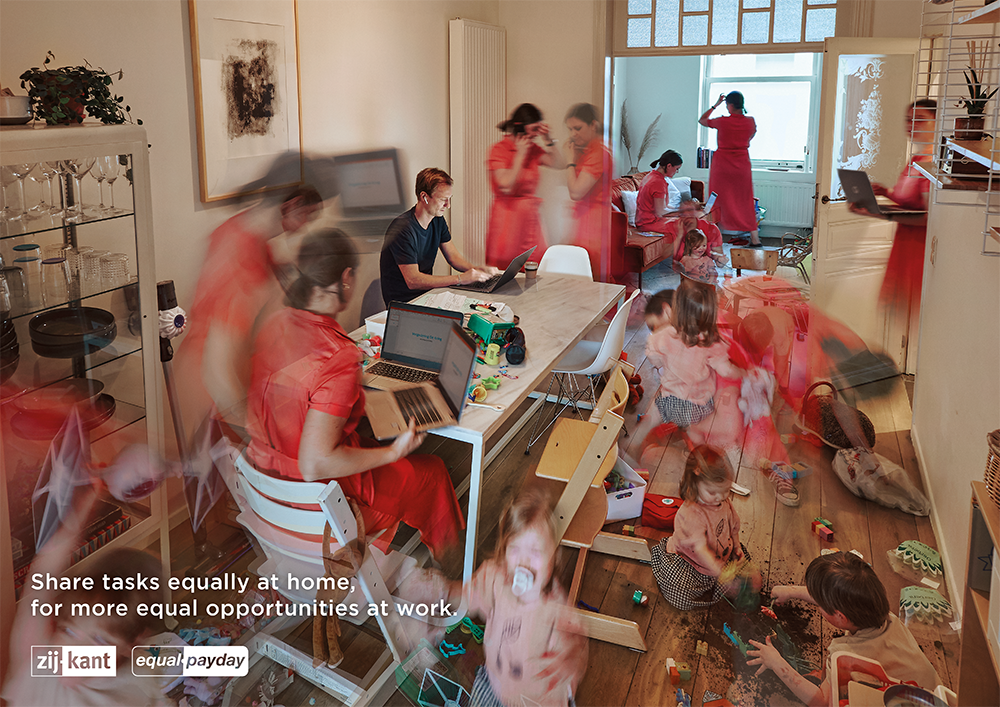
In 2021, our campaign featured a video and portraits by Belgian photographer Jef Boes, which show real young families in their houses, coping with the pressures of telework during the COVID pandemic.
To raise awareness of the unequal share of unpaid care and domestic work between women and men, PES Women asked people to #ShareYourChaos with pictures and stories on social media of their own unpaid care work.
Press release
Share tasks equally at home, for equal opportunities at work!, 10November 2021
2020 – European Unequal Pay Day
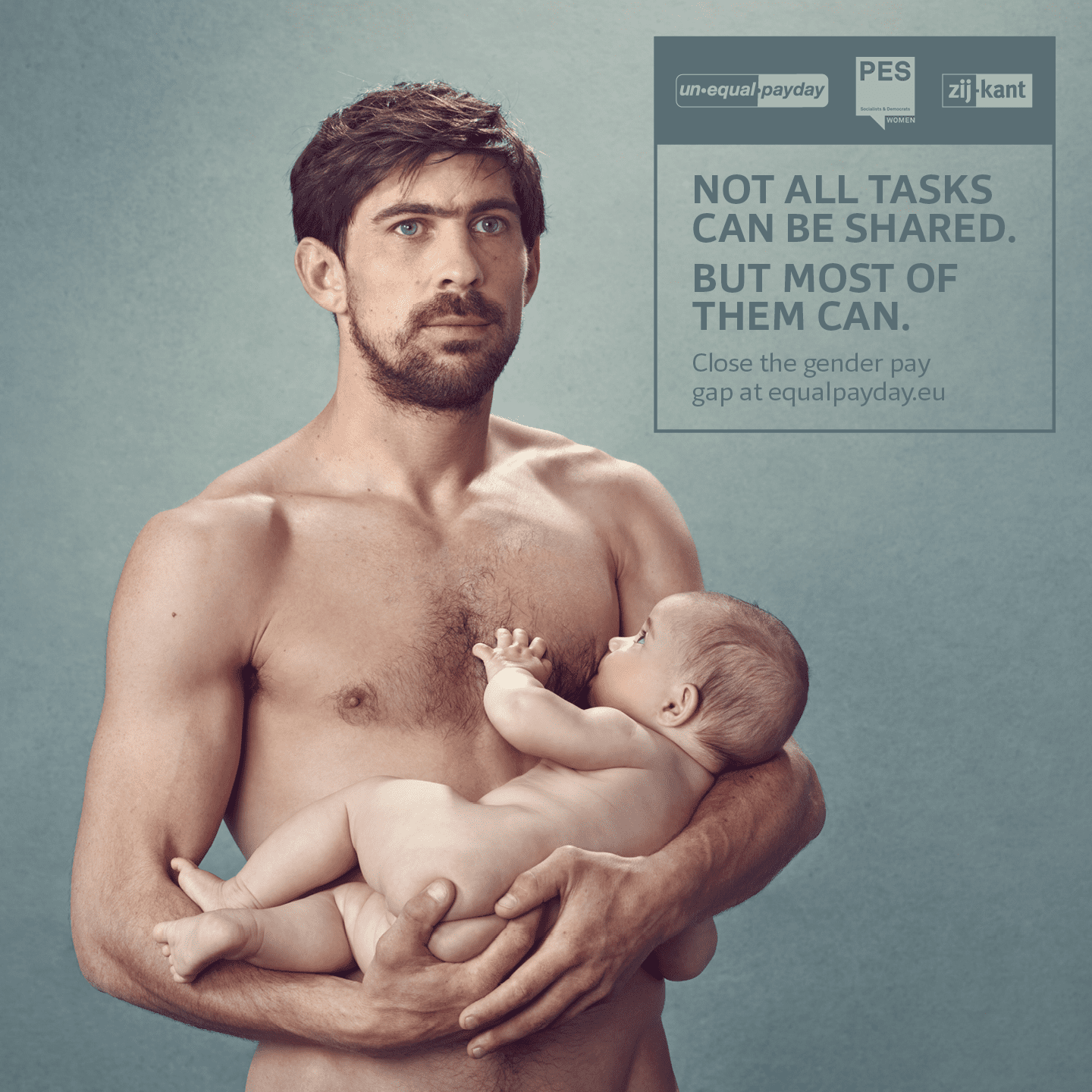
On 4 November*, PES Women together with Zij-Kant called for an action day to close the gender pay gap: the European Unequal Pay Day. This is a symbolic day to raise awareness on the fact that female workers in Europe still earn 16%* less than men and which depicts that from this day on women effectively are working for free until the end of the year.
This pay gap can be explained by multiple causes: segregation on the labour market, missing leave schemes that allow women and men equally to combine private life and careers, unpaid household and care responsibilities, to name but a few.
While the European pay gap of 16% translates into two full months of unpaid labour and thus leads to the European Unequal Pay Day on the 4 November, on national level this day can fall earlier or later in the year, depending on the respective pay gap in each Member State.
*We mark the 2020 EU Unequal Pay Day on 4 November. This is based on a 16% EU pay gap, calculated including the UK.
Press release
Not all tasks can be shared. But most of them can. Let’s close the gender pay gap now together, 4 November 2020
2019 – European Unequal Pay Day
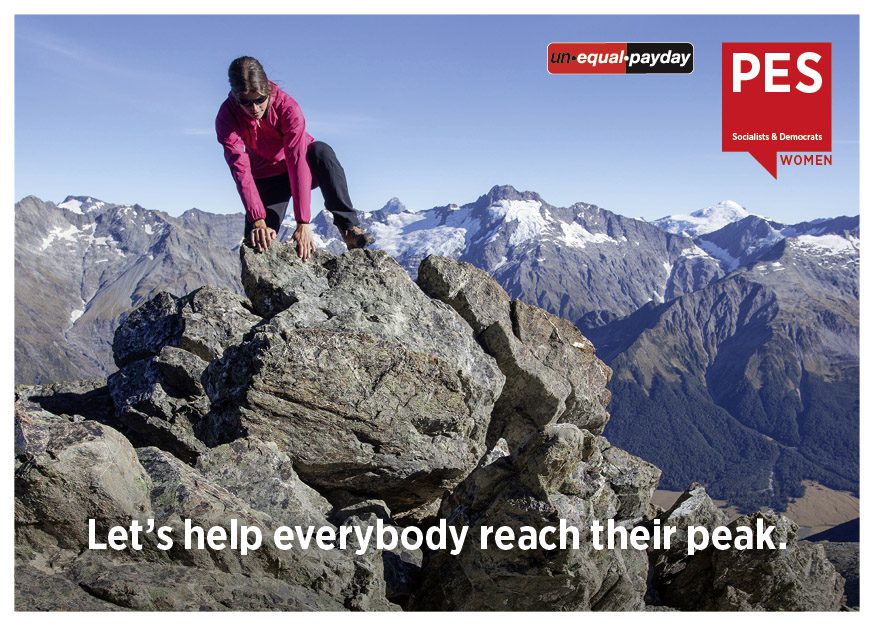
In 2019, PES Women joined forces with Zij Kant and other member organisations to mark the European Unequal Pay Day
We encouraged people to:
- send a postcard to European Commission President Ursula von der Leyen asking for action to close the gender pay gap
- share the e-postcard on their social media accounts
- share our out-of-office reply, to underline the fact that from 4 November until the end of the year, women are working “for free”
Press release
PES Women call on the first female Commission President to close the gender pay gap, November 2019
Campaign video: Let’s talk about gender pay gap
2018 – European Unequal Pay Day
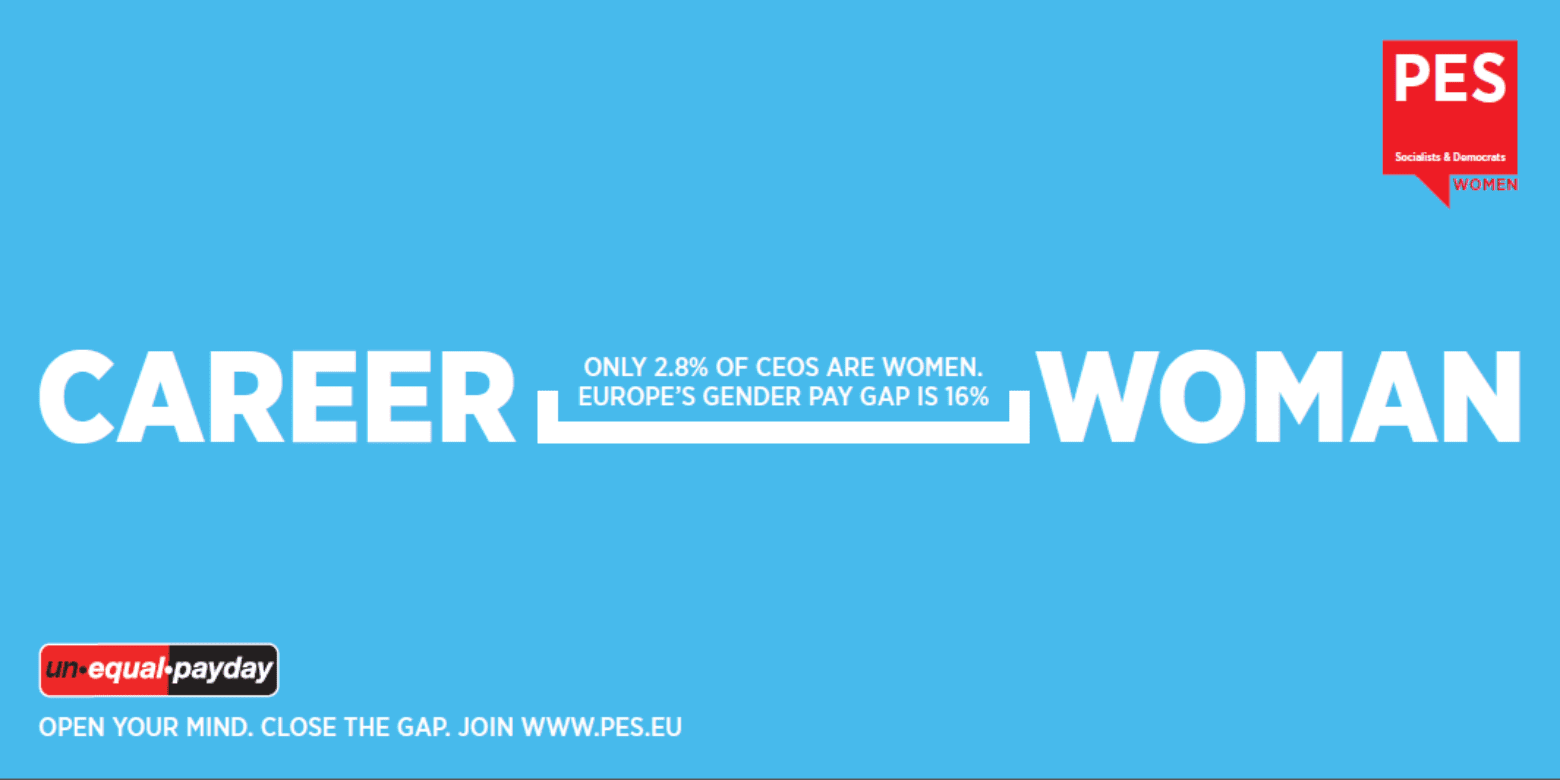
In order to mark the Unequal Pay Day in 2018, PES Women, together with Zij-Kant, organised online actions.
Open your mind_Close the gap
For the European action day, PES Women launched a social media campaign in the run-up to the European Unequal Pay Day. Under the slogan ‘Open your mind_Close the gap’ the campaign provided colourful visuals with facts and figures on the gender pay gap as well as on underlying causes that lead to unequal salaries.
2017 – European Unequal Pay Day
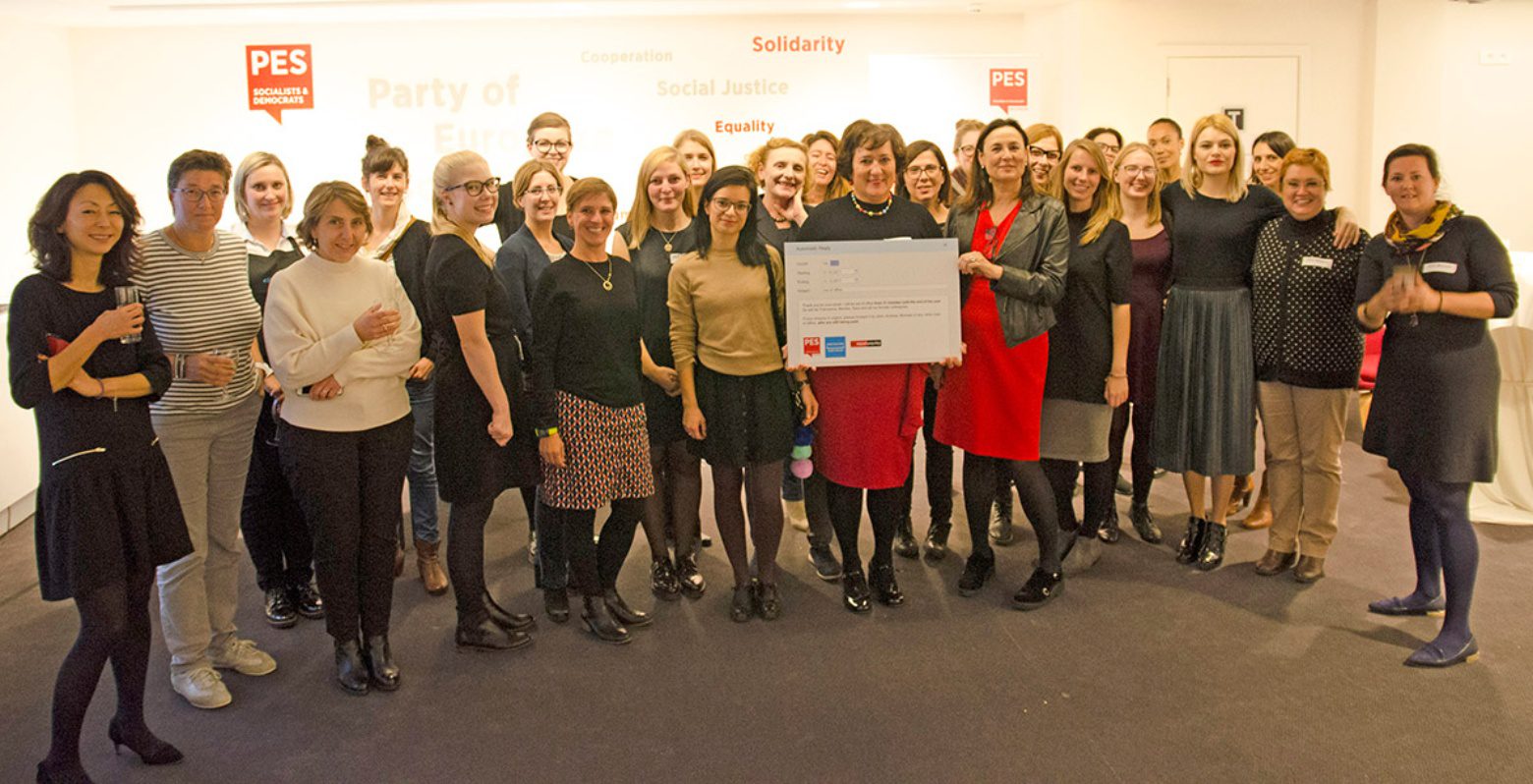
Unequal Pay Day Europe, 31 October 2017
This was the first time that PES Women, together with Zij-Kant, marked the European Unequal Pay Day.
Actions were led both online and offline to sensitise to the fact that, due to the fact that women are paid on average 16% less than their male counterparts, they effectively work for free 2 months each year.